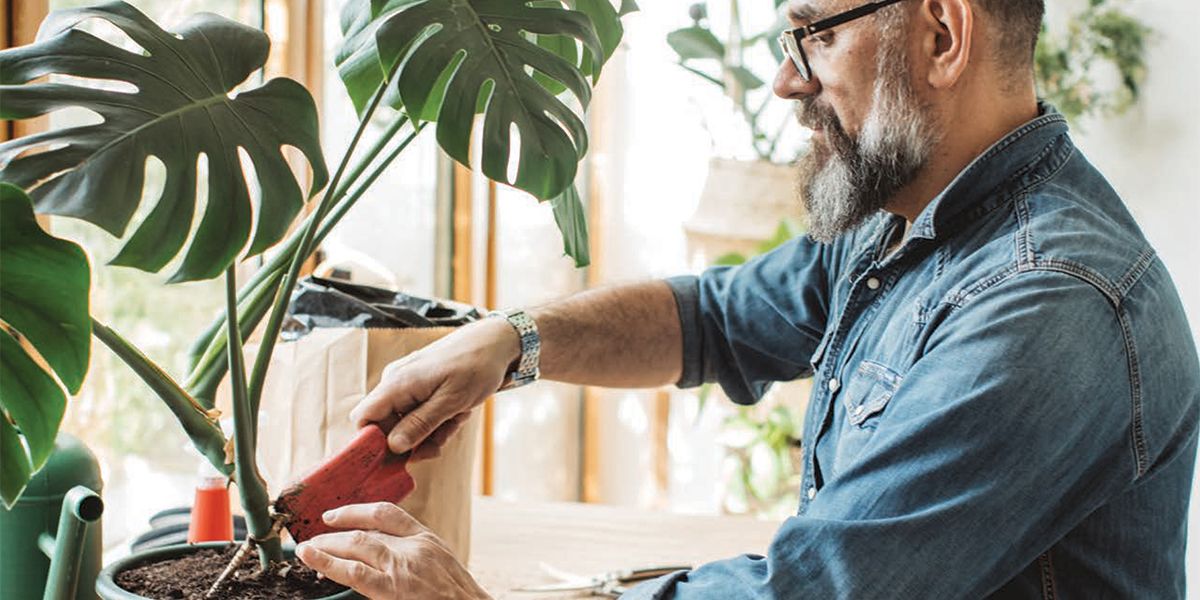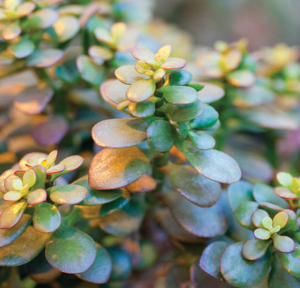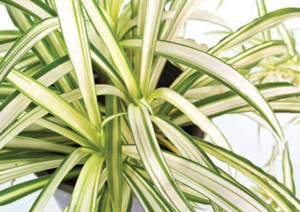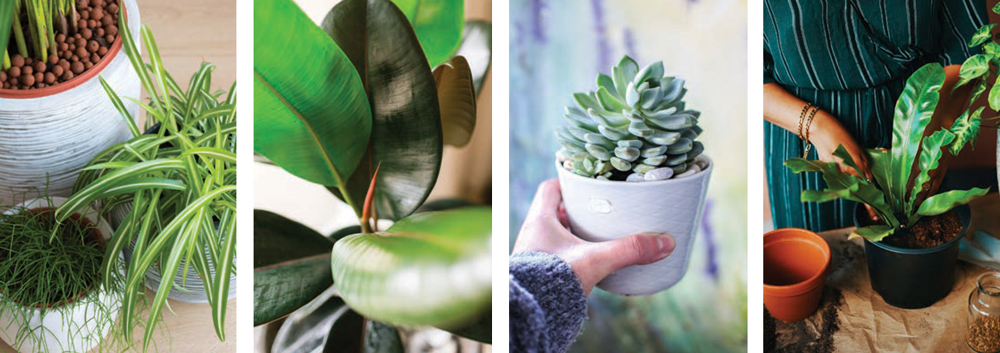A Foliage Fancy

Most of us have always had a few leafy roommates lounging about—a ficus greeting guests in the foyer, African violets basking in a windowsill, a philodendron cascading off a bookshelf—but there’s a new generation of plant lovers who are taking indoor gardening to a whole new level. Instagram is budding with accounts dedicated to whole-house collections (or “jungles” as many plant enthusiasts call them). Years ago, who would have dreamed that taking photos of your houseplants and sharing them with everyone you know would become a popular hobby?
In the past few years, the sale of houseplants has increased 50 percent, according to the National Gardening Association. Market researchers attribute this to an overall wellness trend among millennials who have an appreciation for the natural world and acknowledge the physical and mental health benefits of caring for a plant.
But we can thank them for taking up their green hobby because the great houseplant revival has led to more accessible varieties than ever before.
 High appeal, low maintenance
High appeal, low maintenance
You can’t leave a gardening store now without seeing families of succulents. They may well be the most popular houseplant today. Their thick, “succulent” leaves (the name actually means “juicy”) can store so much water that they require very little regular care; you might as well nickname such a plant “Miss Independent.” Though most are small and simple in shape, they come in just enough colors and varieties to pull off a beautiful potted bouquet. Customizing your own arrangements has become a popular pastime as well. A little chic “chick” here, a little pointy, prickly cacti there. Succulents are suitable for any design style.
Succulents do have needs, though—and mostly that means sunshine. Some varieties need up to six hours per day. Direct sun is best, but like many other houseplants, rotating them often can help them maintain a sturdy structure. (Leaning is a telltale sign they need to be moved). Succulents require soil that drains, so cactus soil or a mix of potting soil with sand or pumice is best. Watering is the tricky part. Overwater and they will drown. You can test the soil about an inch deep on top; when that is dry, then you can water. It is best to water just the soil and not the leaves, as they can develop mold.
Succulents are an easy starting point for a new indoor gardener whose thumb hasn’t turned green yet. And they make great gifts, too, symbolizing an enduring friendship or celebrating a major accomplishment.
 Another hardy independent and a bit exotic plant is the Tillandsia; you may know this as an “air plant.” These little marvels are so independent they don’t even need a pot—or soil. They exist on the air around them and a simple misting once or twice a week. The largest genus in the bromeliad family, these plants enjoy bright light and thrive outdoors or indoors. Stand them among rocks or inside a seashell or glass ball, or dangle them from the ceiling in any number of makeshift plant hammocks. The display itself is a conversation starter.
Another hardy independent and a bit exotic plant is the Tillandsia; you may know this as an “air plant.” These little marvels are so independent they don’t even need a pot—or soil. They exist on the air around them and a simple misting once or twice a week. The largest genus in the bromeliad family, these plants enjoy bright light and thrive outdoors or indoors. Stand them among rocks or inside a seashell or glass ball, or dangle them from the ceiling in any number of makeshift plant hammocks. The display itself is a conversation starter.
Off the beaten pothos
Today’s plant enthusiasts are collectors, too, constantly hunting for a new species to add to their leafy kingdom, or snagging that slight variation to more commonplace plants. Many people own a pothos (also called devil’s ivy), one of the most common and easy-to-care-for houseplants that can grow vines even in shady corners. But the silver pothos, with its striking white markings, is a great find. In brighter light, the markings become even more vibrant.
 Or take the long, spiky spider plant (Chlorophytum) for example, a plant that is easy to maintain and safe for pets. The basic green barbs are common, but to change things up a bit, search out a variegated spider plant featuring a white stripe down the center or even a “reverse variegatum,” with edges that are first yellowish, then turn white around their green center.
Or take the long, spiky spider plant (Chlorophytum) for example, a plant that is easy to maintain and safe for pets. The basic green barbs are common, but to change things up a bit, search out a variegated spider plant featuring a white stripe down the center or even a “reverse variegatum,” with edges that are first yellowish, then turn white around their green center.
Just as the houseplant craze keeps getting bigger, so do the plants themselves. The tropical monstera plant has a fitting name for its supersize nature, and when left in brighter sunny spots can really get to work showing off its big, green, heart-shaped leaves. If you’re looking for a plant to accent your larger furnishings, this would be it.
Ask what your plant can do for you
We learned in elementary school science that plants produce oxygen, and we know oxygen is good for us, especially in a closed-off environment. Some botanists believe that plants are actually working more for us than we know; they can remove toxins and help purify the air, though some say you’d have to simulate a dense rainforest to see this gain. But while the jury is still out on just how effective houseplants are for cleaning our air, there is no doubt that owning a plant can have positive benefits.
Some interior designers live by the rule that you should include something living in each room. Plants can remind us of the world alive outside our walls and help create the relaxed environment we need in order to decrease our everyday stress and enrich our well-being. And in a very real though hard-toexplain way, just being close to another living thing can inspire and motivate, helping to increase our own productivity.
Green thumb or not, most houseplants just seem to know how to be patient with us and forgive us if we miss a watering. There are so many hardy varieties that can become a fixture in our homes for years to come. So enjoy exploring the jungle of possibilities out there if you want to create a jungle of your own and literally “liven up” your home decor. ✦
African violets, air plant, Chlorophytum, devil’s ivy, ficus, indoor gardening, philodendron, pothos, reverse variegatum, spider plant, succulents, Tillandsia, variegated spider plant







